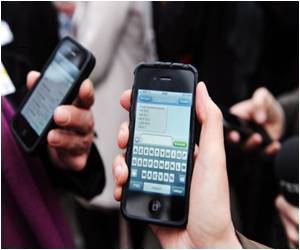A typical college student plays with his or her digital device an average of 11 times a day while in class, reveals study.

More than a fourth said that their grades suffer as a result.
Barney McCoy, an associate professor of broadcasting, embarked upon his study after launching his teaching career seven years ago and noticing the instructional challenges presented by students' digital devices.
From the front of his classroom on multimedia, he often saw the smart phones creeping out.
The view from the back of a classroom while a colleague taught Mass Media Principles was equally telling.
Advertisement
Rather than rely on anecdotal evidence, McCoy decided to try to quantify how often college students tune out their instructors in favor of tweets and texts.
Advertisement
He also asked the students how often they are distracted by others using digital devices and for their perspective on how digital devices should be policed.
Nearly 86 percent said they were texting, 68 percent reported they were checking email, 66 percent said they using social networks, 38 percent said they were surfing the Web and 8 percent said they were playing a game.
McCoy said he was surprised by one response: 79 percent of the students said they used their digital device to check the time.
The top advantages of using digital devices for non-class purposes, according to students, are staying connected (70 percent), fighting boredom (55 percent) and doing related classwork (49 percent).
The most commonly cited disadvantages were that they don't pay attention (90 percent), miss instruction (80 percent), or get called out by their instructor (32 percent).
More than a fourth said they lose grade points because of their digital habits.
The study ias published online in the Journal of Media Education.
Source-ANI









